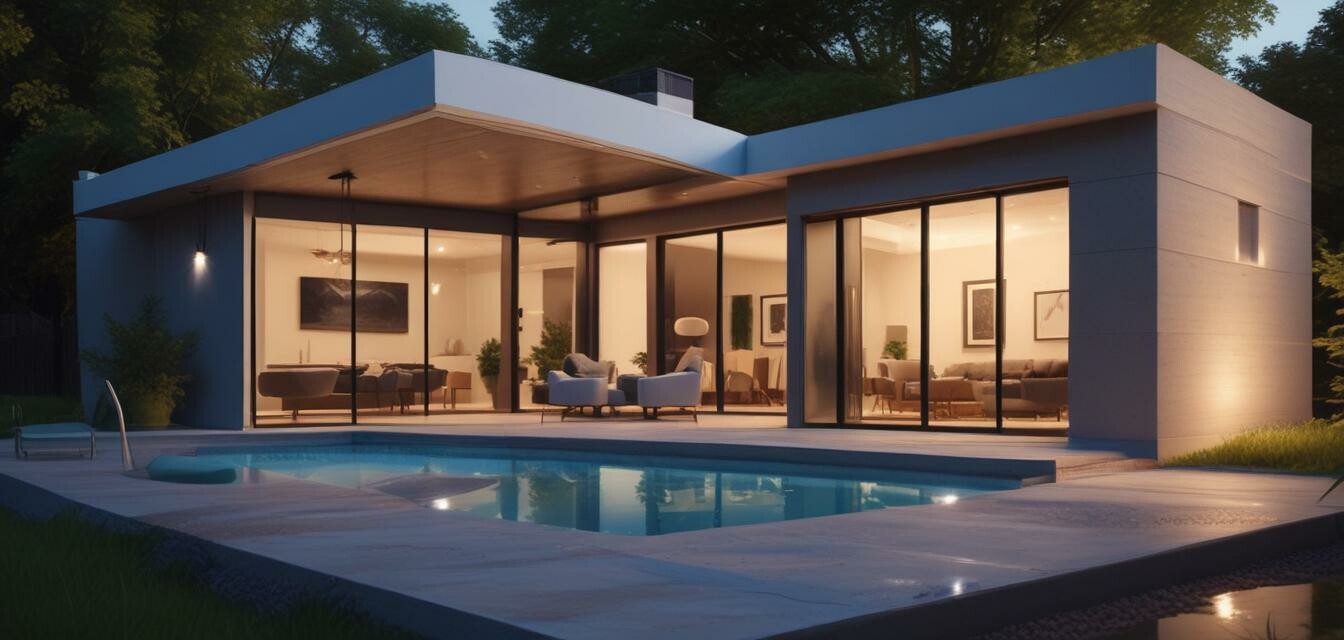
Security Camera Features: What to Prioritize
- Resolution is crucial for clear image quality.
- A wide field of view ensures better coverage.
- Night vision capabilities are essential for after-dark surveillance.
- Look for features such as motion detection alerts.
- Consider cloud storage options for recorded footage.
When investing in a security camera for your home, it’s important to prioritize certain features to ensure you get the best possible protection. From image clarity to advanced night vision capabilities, understanding what matters most can help you make an informed decision. This guide will walk you through essential features to prioritize when purchasing security cameras for home use.
Understanding Resolution
Resolution determines how clear the images captured by your security camera will be. The most common resolutions for security cameras are:
| Resolution | Pixels | Advantages |
|---|---|---|
| 480p (SD) | 640 x 480 | Lower cost, good for small areas. |
| 720p (HD) | 1280 x 720 | Better clarity, suitable for most residential uses. |
| 1080p (Full HD) | 1920 x 1080 | High image quality, ideal for larger spaces. |
| 4MP & 4K | 2560 x 1440 & 3840 x 2160 | Exceptional detail, perfect for comprehensive monitoring. |
Prioritize at least 1080p resolution if you want clear video, especially for identifying faces or license plates. Use smart cameras that offer these higher resolutions for maximum effectiveness.
Field of View (FOV)
The field of view refers to how much area can be monitored by the camera at one time. A wider FOV allows fewer cameras to cover a larger space. Common fields of view include:
- 90° to 100° — Standard coverage for small to medium areas.
- 120° to 140° — Covers larger rooms or outdoor spaces effectively.
- 180° — Ideal for panoramic views.
| Camera Type | Field of View | Best For |
|---|---|---|
| Dome Camera | 100° - 120° | Indoor use, moderate coverage. |
| Bullet Camera | 90° - 110° | Long-distance viewing, outdoor areas. |
| Pano Camera | 180° - 360° | Large areas needing broad coverage. |
A wider field of view can significantly reduce the number of cameras required. For optimal results, choose a camera that offers a minimum of 120° FOV for larger areas.
Night Vision Capabilities
Having reliable night vision capabilities is vital for around-the-clock surveillance. Security cameras can utilize various technologies for night vision:
- Infrared (IR) LEDs: Enable visibility in complete darkness.
- Color Night Vision: Provides color images in low-light conditions.
- Smart Night Vision: Automatically adjusts brightness based on lighting.
| Night Vision Type | Visibility Range | Features |
|---|---|---|
| Infrared | Up to 30m | Typically black and white images. |
| Color Night Vision | Up to 20m | Provides color images, requires some light. |
When choosing a camera, prioritize those that provide high-quality night vision for better visibility in the dark. This is essential for enhancing security during nighttime.
Smart Features and Alerts
Modern security cameras come loaded with useful smart features. Look for cameras that include:
- Motion Detection: Sends alerts when movement is detected.
- Two-Way Audio: Allows communication with visitors or intruders.
- Mobile App Integration: Offers real-time monitoring from anywhere.
Integrating smart features enhances your security system's usability. You can receive real-time alerts on your smartphone, making it easier to respond to potential threats. For more ideas on enhancing your smart home security setup, check our guide on tips and best practices.
Cloud Storage Options
When purchasing a security camera, it's wise to evaluate cloud storage options. Here’s what to consider:
- Subscription Models: Regular fees for cloud storage, but more convenience.
- Local Storage: Use of SD cards, which saves ongoing costs.
- Hybrid Storage: Combination of both local and cloud options.
Choosing the right storage option is critical for maintaining footage securely. For uninterrupted access to your recorded footage, consider cameras that offer flexible storage solutions.
Conclusion
When selecting a security camera, understanding the essential features such as resolution, field of view, night vision capabilities, smart features, and storage options will help guide your decision. Investing wisely will enhance your home security and provide peace of mind.
Tips for First-Time Buyers
- Determine your budget to narrow down options.
- Research compatibility with your existing home automation devices.
- Read product reviews to learn about real-user experiences.
Pros
- Enhanced security through advanced features.
- Ability to monitor your home remotely.
- Peace of mind with reliable alerts.
Cons
- Initial costs can be high.
- Subscription fees for cloud storage may add up over time.
- Potential compatibility issues with older devices.
